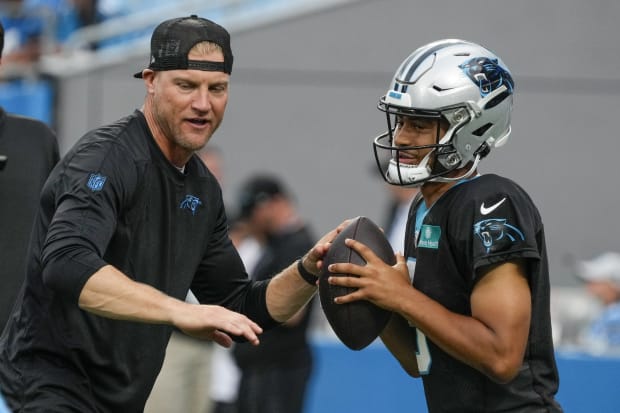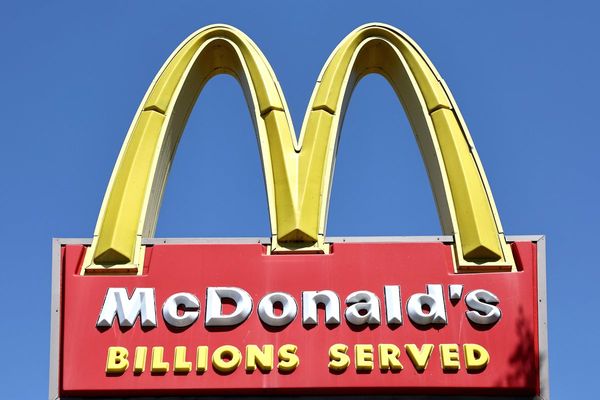It’s time for live preseason action, which means it’s time to set firm expectations for the new quarterbacks.
The lack of a true, definitive quarterback class last year forced us to reexamine the class of 2021 in our yearly rookie projections instead of diving deep into a rookie class in ’22. This year, though, that’s different: Rookie QBs were the clear headliners in April’s draft, with three taken in the top four picks. And even though we still expect Ryan Tannehill to take the majority of the Titans’ snaps in ’23, the possibility of Will Levis securing some (or a lot) of playing time certainly exists.
More than ever, the rookie quarterback is expected to perform, and perform efficiently. A two-year window for possible success not only feels like the industry standard, but it also feels like a timetable that is waning. In five years, how many of the teams who drafted these players will be in need of another passer?
We’ll find out. Until then, here is a look at what we’re expecting and what may constitute the best foot forward toward a future as a franchise quarterback.
Bryce Young, Carolina Panthers
17 starts, 3,500 passing yards, 19-plus touchdown passes, fewer than 12 interceptions, at least one running back with 40-plus receptions, completion percentage of 63% or better, a top-10 snap-to-throw time.
For Young, I think so much of his success is going to be predicated on where the Panthers’ scheme takes them offensively. I have high hopes for the combination of Frank Reich, Thomas Brown and Josh McCown, specifically when it comes to their ability to design something familiar for Young. At Alabama, Young was able to divert from the program’s RPO-heavy offensive approach, thanks to his deep understanding of how football works. His intelligence is a constant, which means there should be a larger section of the playbook available to him earlier on.

Jim Dedmon/USA TODAY Sports
Because the Drew Brees comparison was somewhat omnipresent for Young during the predraft process, I’ll be particularly interested in how often someone like Miles Sanders, Carolina’s free-agent running back, will be featured in the passing game. Timely checkdowns were a unique weapon of Brees’s, and something he used effectively throughout his career. For a modern spin on that approach, look at what Justin Herbert and the Chargers were doing with a borrowed version of that offense under Joe Lombardi last year. Sanders caught 50 passes during his first season with the Eagles. Getting him the ball, if you’re Young, is a highly preferred alternative to leaving the pocket.
With Young, we’re being oddly specific and nitpicky, but the snap-to-throw time is interesting for me. Young tended to create a lot of plays in college, and, thus, held on to the ball a bit longer than some of his counterparts. While I assume that was because he knew he could, his path to success at the NFL level is almost certainly going to be as a quick-strike artist.
C.J. Stroud
17 starts, better than 60% completion rate, a positive completion percentage above expectation, fewer than 60 rushing attempts.
My whole best-case projection with Stroud is about ensuring he’ll continue to be the kind of player he was in college. If Stroud, for example, comes out leaning heavily on the run (which is not necessarily his strong suit), it could be reflective of a discomfort with the speed and look of the NFL game. If we projected out Stroud’s most rush-heavy season in college across a 17-game NFL season, it would be a 61-rush season. Still, by NFL standards, this isn’t ridiculous. Josh Allen ran the ball 89 times during his first year, for example, and that ended up being his least prolific year on the ground. Life happens. The percentage of open receivers Stroud will see during an NFL game will drastically decrease from college, as it does for anyone—but especially for Ohio State quarterbacks used to playing with those receivers and in that offense. He’s going to need to change a little … but hopefully not too much from a quarterback who threw an incredibly high percentage of on-time, catchable footballs in college. According to Sports Info Solutions, Stroud was sixth in the NCAA in catchable ball percentage.
I think this year will ultimately reflect the Texans’ willingness to adapt their scheme to what Stroud is familiar with (obviously, the case for any rookie quarterback). While statistics can tell a large part of the picture, seeing him able to smoothly navigate the pocket on some snaps this year, and find some reliable receivers amid this below-average depth chart, will be a huge win. Shedding the wobbly, baby-giraffe-style drop-backs that are so reminiscent of rookie quarterbacks will lend confidence to the idea that he can be a long-term option at the position.
Anthony Richardson, Indianapolis Colts
More than 2,500 passing yards and 10 touchdowns, fewer than 10 fumbles, more than 5.5 yards per attempt rushing, winning the job outright in training camp.
The Colts’ quarterback competition seems to be shaping up the way we might have expected. Gardner Minshew exhibits a previous knowledge of the scheme (which, thanks to his time with Shane Steichen, he obviously possesses), but starters’ snaps have evened out, with Richardson starting to take a larger share of the workload, according to those at practice on a daily basis. For me, how Richardson handles this reality will be telling, as will his ability to conform to the offense, while obviously showcasing the potential that got him drafted so high in the first place. Do we see him wander a little less in practice?

Grace Hollars/IndyStar/USA TODAY Network
I took the 10-fumble mark from Lamar Jackson’s second season, and the 5.5 yard-per-rush threshold from Jalen Hurts, who had a career-best 5.6 yards per carry under Steichen during his second season in the NFL, before seeing that mark regress to 4.6 yards per carry (perhaps because the Eagles ran so many QB sneaks, which could have squeezed his average down a little bit). I am not pigeonholing Richardson as a rusher, but I am acknowledging a reality: If he is not explosive on the ground, the Colts will struggle. Obviously, he is going to be explosive on the ground, but the long-term confidence comes in how he protects the ball during big opportunities and how he selectively picks his spots to leave the pocket when there are no designed runs called. I’m assuming Steichen will build in a lot of run-pass-run options (similar to the ones Hurts ran in Philadelphia), which also makes the decision-making process more sensible and graspable out of the gate.
Will Levis
Fewer than three starts, a highlight-worthy deep shot during training camp, drop-backs that look the same, four total situational touchdowns.
I think this offseason is about building the foundation of a 2024 hype train. The Titans believe they can win now, and I don’t think their hope is completely misplaced. Levis’s job will be to come out in the preseason with a full embrace of the offense (a version of which he played at Kentucky during his senior season). The hope is his drop-backs will all feature the same rhythm and timing; he will make good decisions quickly; and he will explode Tennessee’s social media channels once or twice by uncorking the full strength of his arm with a 50+ yard touchdown or two.
I wondered about the Titans’ willingness to use Malik Willis near the goal line last year, and I now am especially curious whether the big-bodied Levis may be useful inside the 10-yard line to help alleviate some pressure off Derrick Henry. When Tannehill and Henry are in the lineup at the same time, everyone on defense knows where the ball is going. With Levis, who is a more dependable entity than Willis, the defense may be forced to spread itself out and provide some lighter boxes for the Titans’ anvil of a rusher.







